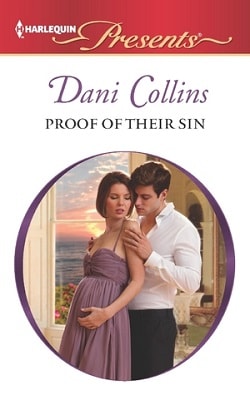“As for the ball, Mr. Brendan,” Dromio said, gesturing loosely to the invitation, “stay close to me. I’ll not have Montcrief insinuating that I don’t know my nation’s theories of commerce.”
“Je,my lord,” Marek said and glanced down at the invitation.
“That will be all.”
But Marek wasn’t ready to be dismissed and didn’t move.
Dromio looked at him curiously. “What?”
“If I may, my lord...how is the king?”
Dromio blinked, clearly surprised by the question, and gave Ratonkin an anxious look. “Why do you ask such an odd question, Brendan?”
Marek didn’t think it odd. Seemed straightforward to him. “He’s looked pale these last few days.”
“Well, he’s a pale man. When he stands next to his wife, he looks like a ghost.”
Queen Agnes’s skin was bronze in color.
“I mean that he looks paler than usual,” Marek said.
Dromio’s eyebrows dipped into a dark frown. He studied Marek. Marek remained still and impassive.
“He is perfectly fine, Mr. Brendan.” And with that, he gave Marek a flick of his wrist to indicate he was dismissed, and then told Ratonkin he wanted a different neckcloth.
Marek walked out of his room, clutching the invitation to a costume ball, of all things, and wondering if Dromio knew the reason the king appeared so pale.
CHAPTER SEVEN
One thousand souls attended the queen’s costume ball at Buckingham Palace, held in honor of the visiting dignitaries from the kingdoms of Alucia and Wesloria. Many of the costumes were carefully planned and created, while others seemed to have been pulled out of attic trunks and dusted off. Those in attendance called upon the near distant past and arrived in Georgian clothing. Others ventured deeper into their imaginations and appeared as important historical figures, including King Henry VIII with three of his eight wives, woodland faeries, and the goblins of youthful fairy tales. One enterprising guest chose to appear as a soothsayer and spent much of the evening divining fortunes for many people who sought her out.
Queen Victoria and Prince Albert were the most resplendent of all, choosing to appear as the effigies that grace the tomb of King Edward III and his wife, Queen Philippa. They arrived with an entourage of celestial page boys who attended them all night.
A twelve-piece orchestra provided the music for dancing, and a great feast was laid out, including marzipan cakes created to look like a map of the adjoining kingdoms of Alucia and Wesloria.
—Honeycutt’s Gazette of Fashion and Domesticity for Ladies
BUCKINGHAMPALACEHADbeen transformed for the costume ball. It was dressed in rich red velvet draperies. The chandeliers overhead were blazing with more beeswax candles than Hollis had ever seen in one place. Six-foot-tall floor-stand candelabras lined the room.
Above the queen’s dais was a marble arch, topped with trumpeting angels. Behind those angels, an orchestra played for the dancers below. At least two dozen footmen were in attendance, all of them dressed in old-fashioned livery that had apparently come just out of storage, judging by the smell of mothballs emanating from them.
Hollis could never have imagined so many people in fanciful costumes. Ladies in the silk pastels and high waists and towering wigs of the Georgian period were numerous, as were a surprising number of ladies dressed as men in trousers and long tails and top hats. Gentlemen tended to be dressed in military uniforms, because, as she was certain women from all walks of life understood, the imaginations of most gentlemen did not venture into costumery. But there were exceptions—a few hearty gentlemen had dressed as women, and in the case of one enterprising sir, a wolf in sheep’s clothing.
All around her, pirates and generals, princesses and courtiers, fortune-tellers and magicians and buccaneers and priests and angels danced.
Hollis was dressed in the garb of a medieval queen, a gown made for her, of course, by Caroline. It was pale blue and had long flowing sleeves that ended below her fingertips, a train as light as a feather, and a braided brocade belt that rode low on her hips. The crowning piece, which Caroline insisted be worn, was a tall conical hat. A tail of silk cascaded from its tip. It looked just like the hats in the old paintings Hollis had seen at the museum in Montagu House. But it was not a good fit and kept sliding around her head, sometimes shifting so far back as to look more like a weapon jutting out the back of her head.
The gown was beautiful, of course, made of silk brocade and a dangerously low décolletage. Caroline was truly talented. Hollis envied her for finding this talent as she neared her thirtieth year. Hollis would love to find a talent to occupy her that did not include the gazette.
Hollis thought the gown was too revealing, but on the other hand, the simple design was quite comfortable to wear. It was lovely all but for that blasted cap! Hollis kept knocking into things with it, mostly gentlemen who were taller than she was. She managed to spear her brother-in-law with it twice.
“You’ll hurt someone with that thing,” Eliza complained. A flower from her floral crown had come undone and drooped over one eye. Her Grecian gown was exquisite, too, and her prince—who had dressed like a prince, thereby proving Hollis’s suspicions about men and costumes—was as handsome as he ever was.
Caroline had made a spectacular Georgian court dress for her costume, including some very impressive paniers. She said she’d worked on it for a year.
“Ayear?” Eliza returned. “But we’ve only known about this ball for three months.”
“What is your point, dearest?” Caroline asked breezily. “I didn’t make it for this ball in particular. I made it because one never knows when a costume may be necessary.”















